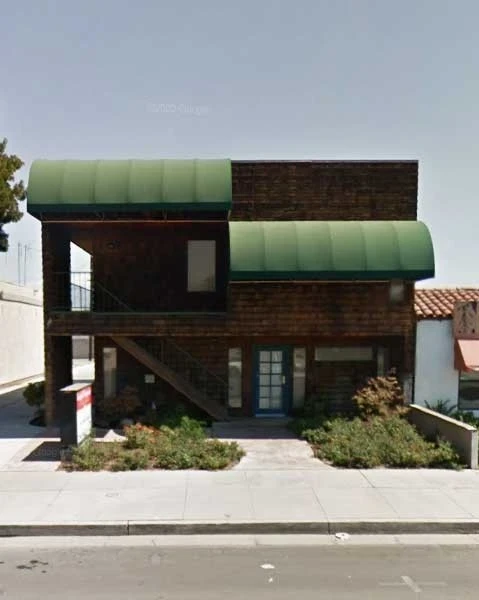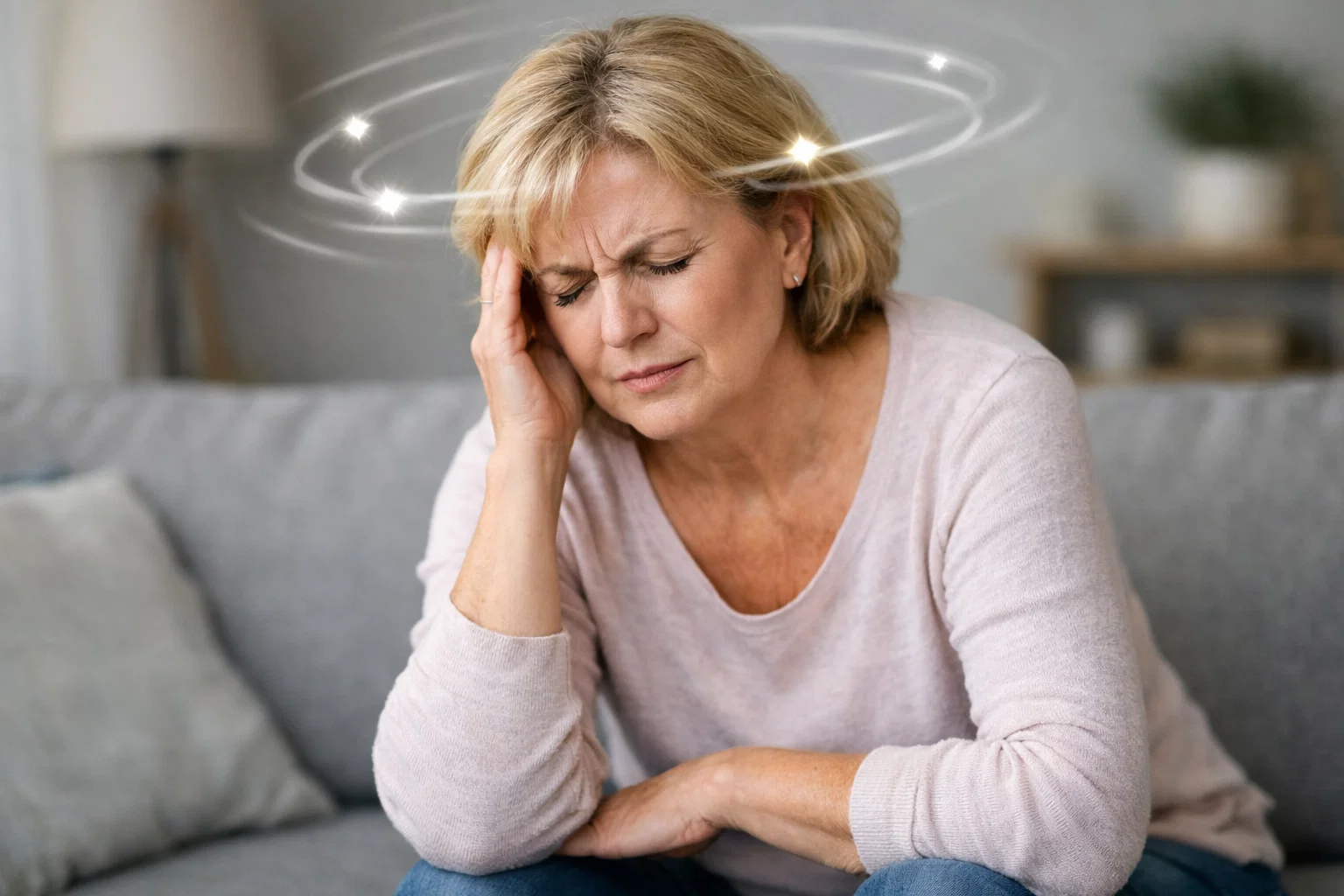
Meniere’s disease is the elephant in the room when it comes to vestibular diseases. The severity of its symptoms can literally destroy any semblance of normalcy for those that suffer. This article is written to offer hope and information to the thousands of people that have been stuck in the medical system and are looking for alternatives to mainstream symptomatic treatment and management. We would like to discuss a little-known natural health care procedure known as Blair Upper Cervical Care whose awareness has been growing in the Meniere’s disease community, in large part to
Michael Burcon D.C. who practices in Grand Rapids Michigan. Dr. Burcon, a Meniere's disease specialist, has published many scientific articles showing that Meniere’s disease is highly correlated to upper cervical spine misalignment and subsequent brainstem interference. Burcon has found that the average Meniere’s patient has suffered a whiplash-type trauma on average 11 years prior to the onset of Meniere’s disease symptoms. In the following article, we would like to discuss why upper cervical spine injury can be the root cause of Meniere’s disease and migraine headaches.
Ménière's Disease - What is it?
Meniere’s disease is a condition of the inner ear that causes sudden attacks of:
- feeling like the room is spinning around you.
- a ringing noise inside the ear.
- the pressure felt deep inside the ear
- hearing loss
Symptoms of Ménière's Disease
During an attack of Ménière's disease the person may suffer from some or all of the following:
- feel dizziness with a spinning sensation (vertigo)
- feel unsteady on your feet
- feel sick (nausea) or be sick (vomit)
- hear ringing, roaring, or buzzing inside your ear
- have a sudden drop in hearing
These symptoms typically happen all at once and can last minutes or hours, but most commonly last 2 to 3 hours. The condition usually starts in 1 ear but can spread to both ears over time. It can take a day or 2 for the symptoms to disappear completely. You may feel tired after an attack.
Symptoms vary from person to person, but an attack of hearing loss without vertigo is uncommon. Attacks can happen in clusters, or several times a week, or they may be separated by weeks, months, or years. Meniere’s disease most commonly affects people aged 20 to 60. It's uncommon in children. There is the ugly side of Meniere’s disease now let’s talk about solutions.
Dr. Burcon’s groundbreaking research on Meniere’s Disease
A research article published in 2016 showed that corrections made to the upper cervical spine had a 90 percent resolution of Meniere’s disease symptoms in 300 cases. Dr. Burcon has been a migraine specialist for the past decade and his most recent research article shows the results of over 900 Meniere's disease patients. What is the relationship between Meniere’s disease and upper cervical spine injury?
The brainstem is the most important neurological structure in the body. It is housed by the bottom part of the skull and extends down into the top two bones of the neck, called the atlas(c-1) and axis(c-2). The brainstem is known as the autonomic nervous system or the automatic nervous system. It is named this because it controls all the functions in the body that you and I are not conscious of. Inside the brainstem, there are many nuclei that control different systems in the body.
The vestibular nucleus is one of these nuclei and its job is to control and coordinate balance in the body. Injuries to the upper cervical spine can tear the soft tissue surrounding the joints in the neck leading to spinal misalignment, loss of joint motion, and interference to the autonomic nervous system. This brainstem interference can result in a cascade of abnormal neurological effects in the body. Dr. Mike Flanagan published a series of articles that take a deep dive into the neurology of the upper cervical spine and the far-reaching effects that a spinal misalignment at this region can have on the overall physiology of the body- to read click here:
Blair upper cervical care does NOT treat symptoms but rather the procedure's goal is to locate, analyze, and correct, spinal misalignment in the neck. In doing so, the physiology of the body is better able to function normally and this results in health and healing. Migraine specialists and Meniere's disease specialists are doctors who look at causes not the treatment of symptoms. Blair's work’s goal is just that. Remove the cause and let the body do the healing!
Migraines the Upper Cervical Spine and Meniere’s disease
Oftentimes patients are struck with a double whammy. In a certain percentage of patients, they not only suffer from Meniere’s disease but also have to deal with migraine headache. Migraine headaches are also highly correlated to upper cervical trauma. There have been many different theories as to the root cause of migraine, ranging from, a vascular condition, to neurologically based. As with the cause of most disease processes the medical field is still in the dark as to their cause.
Migraine symptoms
Migraines, which often begin in childhood, adolescence, or early adulthood, can progress through four stages: prodrome, aura, attack, and post-drome. Not everyone who has migraines goes through all stages. But these are the classical migraine stages.
Prodrome
One or two days before a migraine, you might notice subtle changes that warn of an upcoming migraine, including:
Constipation
- Mood changes, from depression to euphoria
- Food cravings
- Neck stiffness
- Increased thirst and urination
- Frequent yawning
Examples of migraine aura include:
Visual phenomena,
such as seeing various shapes, bright spots or flashes of
light
- Vision loss
- Pins and needles sensations in an arm or leg
- Weakness or numbness in the face or one side of the body
- Difficulty speaking
- Hearing noises or music
Attack:
Severe pounding
headache. Most migraine sufferers experience on only one side of
the head but others can have bilateral pain. The headache can last
from a few hours to many days depending on the
person.
Aura
For
some people, aura might occur before or during migraines. Auras are
reversible symptoms of the nervous system. They're usually visual
but can also include other disturbances. Each symptom usually
begins gradually, builds up over several minutes, and lasts for 20
to 60 minutes.
Post Drome
Severe fatigue
usually experienced following the attack and it can take a day or
two for the patient to feel “normal”.
Migraine Headache and Upper Cervical Spine injury
Much like Meniere’s Disease, migraine headache patients can find great relief and heal with the upper cervical spine. It has been our experience in our upper cervical clinics that upper cervical spine misalignment can be at the root of migraine headache problems. While no procedure has the answers for all people it is the rule, not the exception that migraine patients find relief and recovery.
It is common for patients who suffer from migraines to correlate their health problems to a prior injury. Whiplash, sports injuries, and blunt trauma to the neck and head can be predisposing factors in the genesis of migraine headache. As we discussed earlier, the top two bones in the neck are the most susceptible to spinal injury as a result of the head weighing 10-12 pounds and the atlas(c-1) weighing two ounces. This structural relationship makes the upper cervical spine vulnerable to injury and spinal misalignment. When the upper neck becomes misaligned it irritates and interferes with normal brainstem function which can lead to a plethora of chronic health conditions.
What Exactly Does a Blair Upper Cervical Doctor Do?
Blair Upper Cervical doctors are specially trained to locate spinal misalignments in the upper cervical spine and correct them. Spinal misalignment is located by running a battery of neurological tests that locate the spinal segments that have been injured and misaligned by a prior neck injury.
Once located, precision imaging in the form of digital x-ray or cone-beam computed tomography (Cbct) is used to precisely determine which joint has misaligned and the angulation of the misaligned joint. Each person’s anatomy is different and therefore imaging is used to uncover the blueprint to be used to correct each patient’s individual misalignment pattern. Once this information is gleaned, a gentle, light correction is made without twisting, popping, or pulling.
The patient is then monitored overtime to ensure that the correction is holding. If the testing indicates the need for another correction, then it is performed. However, the goal of Blair Upper Cervical Care is for the patient to stay in “adjustment”. It isn’t the correction that produces healing. It is the removal of nerve irritation and the adjustment “holding” in its normal position that allows the body to function better and proceed through a healing process.
This is how Blair Chiropractic care can often help remove the underlying cause of many who suffer from Vertigo, Meniere’s disease, neck pain, migraine headaches, and other chronic health problems by supporting the body in healing itself.







Leave a comment